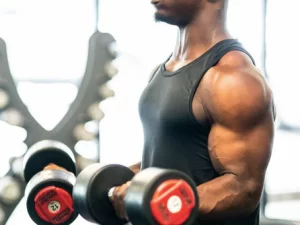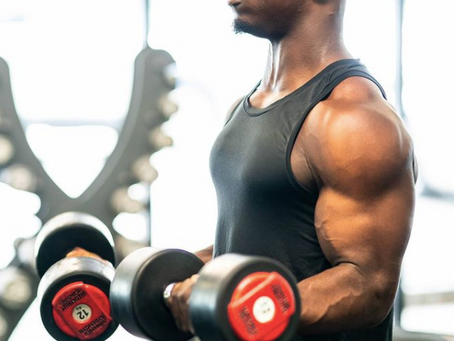
We’ve all experienced muscle growth. We would go to the gym, lift weights, eat enough food, and gradually see our muscles getting bigger.
But have you ever wondered how muscles grow? That new muscle tissue certainly doesn’t come out of thin air, so what’s the deal here?
Let’s break it down.
A Bird’s Eye View Of Muscle Tissue To understand muscle growth, we first have to look at muscle tissue and what makes it up.
Skeletal muscle consists of many muscle fibre bundles called fascicles. Each bundle contains dozens of fibres that run parallel to one another.
By going deeper and examining an individual muscle fibre, we see that each consists of many myofibrils that also run parallel to one another. Surrounding myofibrils inside each muscle fibre, we find sarcoplasmic fluid containing adenosine triphosphate and other molecules.
By zooming one more level, we get to myofilaments – microscopic components that run parallel to one another and make up the individual myofibrils.
Muscle Hypertrophy: How (And Why) It Occurs Hypertrophy refers to growth. Muscles become larger thanks to the development of individual cells inside. How well or poorly we can build muscle depends on many factors, including, but not limited to:
-
Genetics
-
Sex
-
Age
-
Consistency
-
Nutrition
-
Sleep habits
-
Effort
Muscle growth comes in two forms: myofibrillar and sarcoplasmic hypertrophy.
Myofibrillar hypertrophy refers to the accumulation of new myofibrils, which are the contractile units inside our muscles. Thanks to the increased number of contractile units, this type of growth also comes with increases in strength and power capacity.
Sarcoplasmic hypertrophy refers to the accumulation of sarcoplasmic fluid inside our muscle cells (fibres). Due to this, sarcoplasmic growth typically doesn’t result in strength gains.
It’s important to note that, while unique, the two types of hypertrophy don’t occur in isolation. Both types of growth happen together and improve upon one another, regardless of our training style.
For example, you might prefer doing high-repetition training, which mostly leads to sarcoplasmic growth. But training also inevitably strengthens your muscles, which occurs thanks to myofibrillar hypertrophy.
How Training Leads to Muscle Growth Beyond best practices, optimal exercises, and other similar training details, working out builds muscle because it stresses the body, which triggers a growth response.
Thanks to mechanical tension and metabolic stress, your body responds to the stress by reinforcing the muscle tissue to handle the same stress better in the future. This is one reason why pushing yourself consistently is so important. If you get comfortable and start doing the same thing repeatedly, your body won’t see a reason to improve further.
We can break the muscle-building process into three significant events:
-
The primary mechanism (training stimulus)
-
Molecular signalling
-
Up-regulation of muscle protein synthesis rates.
For example, you do a bicep workout, which causes metabolic stress and high levels of tension on muscle fibres. Local cells then send signals to the body, which triggers a response. As a result, your body reacts by up-regulating muscle protein synthesis rates, which deploys large amounts of protein to the affected muscle. These proteins repair the muscle damage you’ve caused and accumulate inside muscle fibres, making them bigger, stronger, and more resilient.




